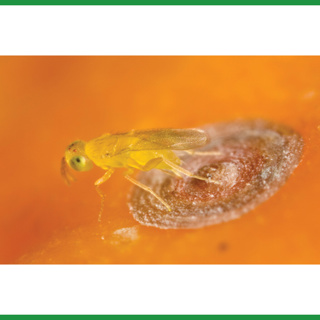Aphytis
Item No. BIOAPHMEL
Aphytis is a parasitoid of armoured scale insects + including red scale (Aonidiella aurantii) + oriental scale (Aonidiella orientalis) and oleander scale (Aspidiotus nerii).
Description
Aphytis is a parasitoid of armoured scale insects + including red scale (Aonidiella aurantii) + oriental scale (Aonidiella orientalis) and oleander scale (Aspidiotus nerii).
Specifications
- Sales UOM Pack Qty
- 1
- Brand Name
- Biological Services
- Country of Manufacture
- Australia
- Product Range
- Biological Controls
- Category
- Scale Insects
- Sub Category
- Armoured Scales Oleander Scales Oriental Scales Red Scales Scale insects
Aphytis
Specifications
- Sales UOM Pack Qty
- 1
- Brand Name
- Biological Services
- Country of Manufacture
- Australia
- Product Range
- Biological Controls
- Category
- Scale Insects
- Sub Category
- Armoured Scales Oleander Scales Oriental Scales Red Scales Scale insects
Description
Aphytis is a parasitoid of armoured scale insects + including red scale (Aonidiella aurantii) + oriental scale (Aonidiella orientalis) and oleander scale (Aspidiotus nerii).
